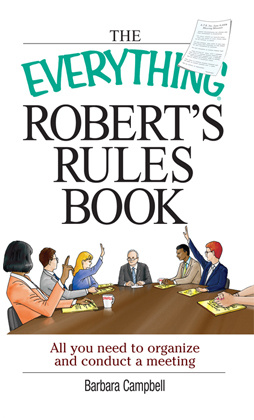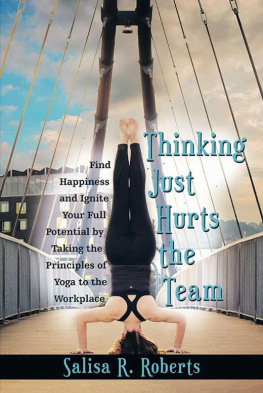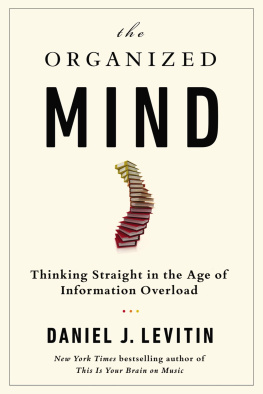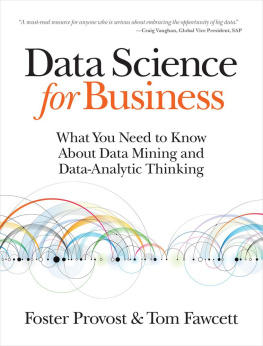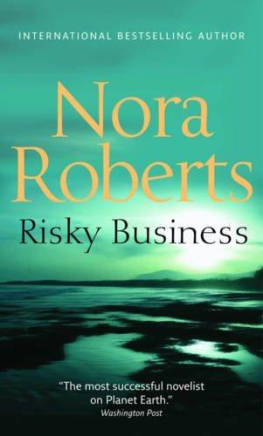M any minds and bodies have contributed to this book, which is the embodiment of the ideas and practices of a much wider community of people. This project gestated over a long period of time, and along the way I have racked up debts to people who, knowingly or not, have inspired me, shaped my thinking, or provided an environment in which I could test things out.
Although Ive worked in business for nearly twenty years, I still regard myself as an anthropologist; and Im thankful for Anthony Cohen, whose lectures at the University of Edinburgh made me realize that anthropology was a discipline that could unveil the world in new and fascinating ways. Jonathan Spencer supervised my PhD thesis and encouraged my unconventional research interests.
Ive been fortunate to have the close support and encouragement of the entire team at Stripe Partners, which has acted as a test-bed for much of the theory and practice of embodiment explored in this book. I owe a particular debt to Tom Rowley, Tom Hoy, and Harry Hobson for innumerable stimulating conversations about the ideas contained in this book, and their tolerance during the times when I was distracted. Our clients have also been supportive as we tried out many of the theories Ive touched on in this bookI hope they have benefited from these adventures as much as I have.
In the early stages of this books development, James Crabtree, Jennifer Collins, James Hall, and Tony Salvador gave me particular help and encouragement and I doubt the book would have moved forward without them. For intellectual challenge, comradeship and support over the years thanks to Ken Anderson, Tina Basi, Ed Beerbohm, Maria Bezaitis, Melissa Cefkin, Martha Cotton, John Curran, Adam Drazin, Sam Ladner, Tracey Lovejoy, Anne McClard, Alexandra Mack, Christian Madsbjerg, Margie Morris, Martin Ortlieb, the much-missed Reshma Patel, John Payne, Nik Pollinger, David Prendergast, and Shelley Sather. From the outset through to the bitter end, Stokes Jones and Rachel Singh have been special sources of support and encouragement.
A special thanks to those who agreed to talk to me in the research stages of this book and generously gave their time, ideas and experiences: Tom Alison, Mark A. Burchill, David Dillard, Jeff Jarrett, Trevor Marchand, Erin OConnor, Ben Page, His Excellency Simon Smits, Thomas Thwaites, Alan Winfield, and Lucy Yu. Special thanks to David Begbie and the team at the Crossroads Foundation in Hong Kong for a truly unforgettable and uncomfortable twenty-four hours.
Particular thanks to John Sherry and Jarrett Wilson-Gray for close readings and comments on draft sections of the book.
I am very lucky to have Euan Thorneycroft at A. M. Heath as an agent. I couldnt have wished for a more decisive and incisive supporter. Oli Holden-Rea at Bonnier has been a dream editor, keeping things on track, helping me keep things as simple as possible and sticking with me. This book would be significantly weaker without his labors. My thanks also to Nick Humphrey for his exacting and text-enhancing copy editing. Of course, I acknowledge exclusive responsibility for all errors, omissions, or other weaknesses. Lizzie Dorney-Kingdom and Katie Greenaway helped to ensure this book made it into your hands.
My wider family have supported me unstintingly, especially Mum, Sarah, and Alice. Although he wont get to read it, a special thanks to Dad, who was a great inspiration. He would loved to have been this books copy editor.
Above all, I thank Lucy, the embodiment of grace, love, and patience. Without her, this book simply wouldnt have been possible. Despite her own professional commitments, shes kept the show on the road and put up with my all-too-frequent travel and distraction over a very long period of time. This book is for her, and for Joe, Martha, and Kit.
It seems almost as if computers were designed with the intention of our becoming more like them.
BRIAN CHRISTIAN
W hile sailing to Sweden from Holland on rough seas, the captain of a ship made the discovery. In one of the cabins he found a diabolical lifelike doll of a young girl. One account reports that believing it to be responsible for the bad weather his crew were encountering, he instructed them to throw it overboard. According to legend the doll, or automaton, belonged to the seventeenth-century philosopher Ren Descartes who was a passenger on the vessel.
Although there is only a brief mention of the episode in a book published in 1699, nearly four decades after Descartess death the story has been retold across the centuries. The details of the story change with each retelling, but most begin with the indisputable facts. Descartes had fathered a daughter called Francine with a maidservant in the house of a bookseller in Amsterdam, where he was living at the time. This daughter died of scarlet fever at a young age in 1640 and Descartes sailed to Sweden, where he subsequently died of pneumonia.
However, with these bare facts established, the story took on a life of its own in each recasting. In some accounts the doll is made of glass, while in others it is made of wood. Some mention its ability to talk, and others say that she could move. One retelling mentions a beautiful blonde automaton ... discovered in a packing case on board a ship and dumped over the side by the captain in his horror of apparent witchcraft. While Descartess daughter Francine and her tragic early death was real, there is no evidence that he built an automaton as has been described over the subsequent centuries, or that any such creation was aboard this boat.
Mechanical devices and toys like this were very fashionable curiosities and playthings at this point in history. In seventeenth- and eighteeth-century Europe, decorative and horological automata were ubiquitous in gardens and churches. Anatomical and astronomical models, water clocks, and playful mechanical animals were all the rage among the intellectual and affluent classes. Descartes himself was reputed to have designed, but never built, a dancing man, a mechanical spaniel that could chase a pheasant, and a flying pigeon. Automata were entertaining and brought gardens and homes alive, but they were more than just toys in the salons and summer houses of the affluent; these mechanical objects embodied the mechanistic thinking of the age.
In seventeenth-century Europe, ideas about how the universe and bodies worked were dominated by mechanical explanations. The operation of the universe and the movement of the planets was explained by mechanical principles. Plenty of references were made to the clockwork universe and bodies were seen as operating under the same machine-like principles. Automata moved because they were powered by external forces, water in the case of garden ornaments, or clockwork in mechanical animals.
The anatomical and philosophical thinking of the time suggested that natural bodies also only had movement when they were instructed by an external force. The human body acted only because it had a soul that directed the mind which, in turn, commanded the body. Descartes made such an argument in his Treatise of Man:
I should like you to consider that these functions (including passion, memory, and imagination) follow from the mere arrangement of the machines organs every bit as naturally as the movements of a clock or other automaton follow from the arrangement of its counter-weights and wheels.
Descartes was viewed with suspicion by the Church because he sought to provide non-mystical explanations and relied on mechanistic explanations, which compared machines and bodies. As he saw it, the actions of both were performed on the instruction of intelligent forces. For an automaton like his mechanical daughter that was a complex clockwork mechanism, while a human body was instructed by its mind.


